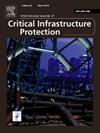STADe: An unsupervised time-windows method of detecting anomalies in oil and gas Industrial Cyber-Physical Systems (ICPS) networks
IF 5.3
3区 工程技术
Q1 COMPUTER SCIENCE, INFORMATION SYSTEMS
International Journal of Critical Infrastructure Protection
Pub Date : 2025-04-23
DOI:10.1016/j.ijcip.2025.100762
引用次数: 0
Abstract
Critical infrastructure and Operational Technology (OT) are becoming more exposed to cyber attacks due to the integration of OT networks to enterprise networks especially in the case of Industrial Cyber-Physical Systems (ICPS). These technologies that are a huge part of our daily lives usually operate by having sensors and actuators constantly communicating through an industrial network. To secure these industrial networks from cyber attacks, researchers have utilised misuse detection and Anomaly Detection (AD) techniques to detect potential attacks. Misuse detection methods are unable to detect zero-day attacks while AD methods can, but with high false positive rates and high computational overheads. In this paper, we present STADe, a novel Sliding Time-window Anomaly Detection method that uses a sole feature of network packet inter-arrival times to detect anomalous network communications. This work aims to explore a mechanism for detecting breaks in periodicity to flag anomalies. The method was validated using data from a real oil and gas wellhead monitoring testbed containing field flooding, SYN flooding, and Man-in-the-Middle (MITM) attacks — which are attacks that are popularly used to target the availability and integrity of oil and gas critical infrastructure. The results from STADe proved to be effective in detecting these attacks with zero false positives and F1 scores of 0.97, 0.923, and 0.8 respectively. Further experiments carried out to compare STADe with other unsupervised machine learning algorithms – KNN, isolation forest, and Local Outlier Factor (LOF) – resulted in F1 scores of 0.55, 0.673, and 0.408 respectively. STADe outperformed them with an F1 score of 0.933 using the same dataset.
STADe:一种检测油气工业网络物理系统(ICPS)网络异常的无监督时间窗方法
由于OT网络与企业网络的集成,特别是在工业网络物理系统(ICPS)的情况下,关键基础设施和运营技术(OT)越来越容易受到网络攻击。这些技术是我们日常生活的重要组成部分,通常通过传感器和执行器通过工业网络不断通信来运行。为了保护这些工业网络免受网络攻击,研究人员利用误用检测和异常检测(AD)技术来检测潜在的攻击。误用检测方法无法检测零日攻击,而AD方法可以,但假阳性率高,计算开销大。在本文中,我们提出了一种新的滑动时间窗异常检测方法STADe,它利用网络数据包到达时间的唯一特征来检测异常网络通信。这项工作旨在探索一种检测周期性中断以标记异常的机制。该方法通过一个真实的油气井口监测试验台的数据进行了验证,该试验台包含油田注水、SYN注水和中间人(MITM)攻击,这些攻击通常用于针对油气关键基础设施的可用性和完整性。结果表明,STADe检测这些攻击是有效的,假阳性为零,F1得分分别为0.97、0.923和0.8。进一步的实验将STADe与其他无监督机器学习算法——KNN、隔离森林和局部离群因子(LOF)——进行比较,结果F1得分分别为0.55、0.673和0.408。使用相同的数据集,STADe的F1得分为0.933,优于它们。
本文章由计算机程序翻译,如有差异,请以英文原文为准。
求助全文
约1分钟内获得全文
求助全文
来源期刊

International Journal of Critical Infrastructure Protection
COMPUTER SCIENCE, INFORMATION SYSTEMS-ENGINEERING, MULTIDISCIPLINARY
CiteScore
8.90
自引率
5.60%
发文量
46
审稿时长
>12 weeks
期刊介绍:
The International Journal of Critical Infrastructure Protection (IJCIP) was launched in 2008, with the primary aim of publishing scholarly papers of the highest quality in all areas of critical infrastructure protection. Of particular interest are articles that weave science, technology, law and policy to craft sophisticated yet practical solutions for securing assets in the various critical infrastructure sectors. These critical infrastructure sectors include: information technology, telecommunications, energy, banking and finance, transportation systems, chemicals, critical manufacturing, agriculture and food, defense industrial base, public health and health care, national monuments and icons, drinking water and water treatment systems, commercial facilities, dams, emergency services, nuclear reactors, materials and waste, postal and shipping, and government facilities. Protecting and ensuring the continuity of operation of critical infrastructure assets are vital to national security, public health and safety, economic vitality, and societal wellbeing.
The scope of the journal includes, but is not limited to:
1. Analysis of security challenges that are unique or common to the various infrastructure sectors.
2. Identification of core security principles and techniques that can be applied to critical infrastructure protection.
3. Elucidation of the dependencies and interdependencies existing between infrastructure sectors and techniques for mitigating the devastating effects of cascading failures.
4. Creation of sophisticated, yet practical, solutions, for critical infrastructure protection that involve mathematical, scientific and engineering techniques, economic and social science methods, and/or legal and public policy constructs.
 求助内容:
求助内容: 应助结果提醒方式:
应助结果提醒方式:


